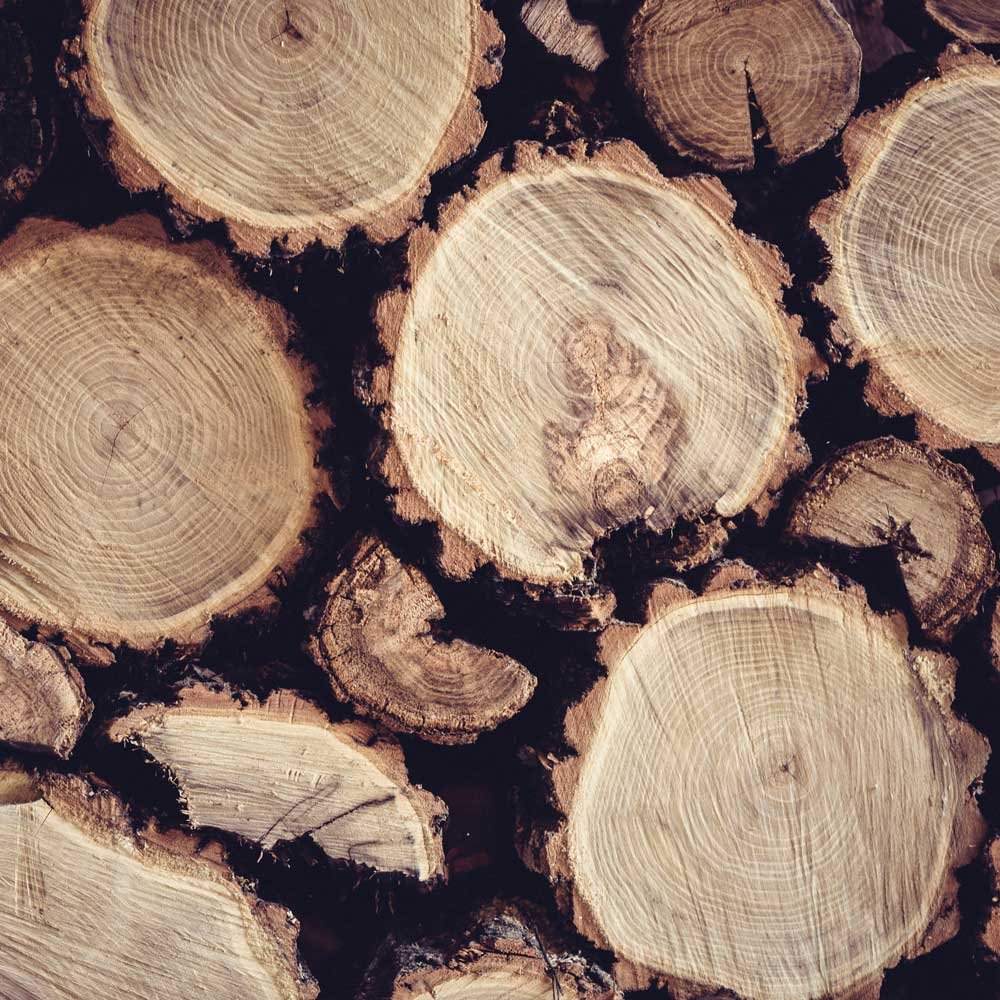What is the best type of wood for spoon carving and why?
Not all wood is the same. There are several factors to consider when choosing the best wood for spoon carving. Below, I explain the key characteristics that the ideal wood for this type of craft should have.
Key Characteristics of Wood for Spoon Carving
Generally, wood for spoon carving should meet the following requirements:
- Hardwood: Slow-growing and dense.
- Green wood: Still holds humidity
- Fine grain: Thin and uniform fibers.
- Straight grain: Knot-free and easy to split along the grain.
Why is hardwood better?
Although it might seem easier to work with softwood like pine, the ideal wood for spoon carving is hardwood. This is because hardwood has a denser structure, which provides the necessary strength and durability for the final product.
Softwoods, such as conifers, are more porous and fragile, resulting in spoons that are less suited for daily use. While carving hardwood requires more effort, it is essential to ensure that the spoon lasts for a long time.
Using Green Wood for Spoon Carving
Working with green wood makes the carving process easier because the wood retains its moisture, softening the fibers and creating a more homogenous texture. Unlike dry wood, which requires additional tools like chisels, mallets, and workbenches, green wood allows for simpler carving with hand tools.
In this video you can see how spoons were traditionally carved from Boxwood in Spain.
Note: When using green wood, it is important to store it correctly to prevent cracking. Learn more in the article: How to Store Green Wood.
How to Identify Suitable Hardwood

Hardwood comes from slow-growing trees, indicated by closely spaced growth rings. Another important characteristic is fine grain, which makes the structure denser and easier to carve.
Additionally, the wood should have a straight grain, which allows for easy splitting along the fibers. Avoid wood with knots, as they disrupt the continuity of the grain and complicate the carving process.
List of Ideal Woods for Spoon Carving
Here are some tree species that are excellent choices for spoon carving. These are the ones that are available where I live. Explore your surroundings to find species that meet the requirements listed above.
- Cherry
- Chestnut
- Ash
- Walnut
- Birch
- Apple
- Pear
- Plum
- Beech
Where to Find Wood for Carving
If you have access to a forest, you can use fallen branches or sections of logs from fruit trees or larger trees. You can also seek help from an arborist to cut larger logs into sections.
Read more about getting the most out of a log or branch in: Understanding the grain and deformation.
For those living in cities, you can contact local tree pruning agencies or individual gardeners. If green wood is not available, you can buy dry Basswood.
Basswood, though dry, is a great option for beginners. It is dense but soft, making it ideal for learning how to carve spoons. However, since it is machined, it is crucial to observe the direction of the grain before starting the carving.
You can find Basswood for spoon carving in our Store.
More on the importance of grain direction in the article: Following the grain: The direction of the cut.
Conclusion
By choosing the right wood and paying attention to the grain direction, you will ensure that the process of spoon carving is more efficient and enjoyable. Explore local wood options and be sure to follow these principles to create strong and long lasting spoons.


Hello,
What is Basswood? Is it American or African? Presumably it is only grown ornamentally like other imported trees?
Hello.
Its scientific name is: Tilia cordata Mill. Syn- T. parviflora ehrh; Tillia europaea L; Tilia plattyohyllos Scop, Tilia spp; Tilia americana.
It grows in Europe and North America.